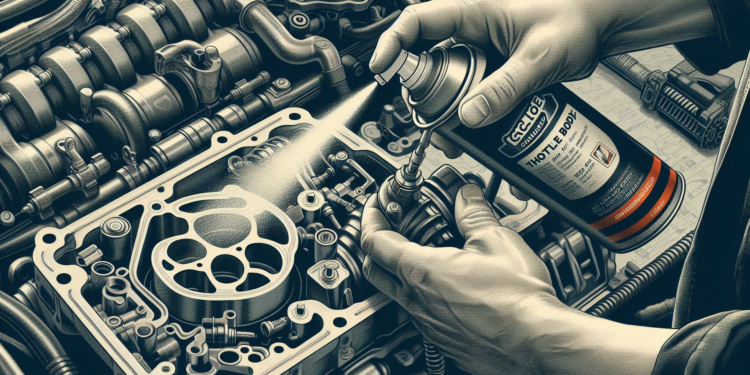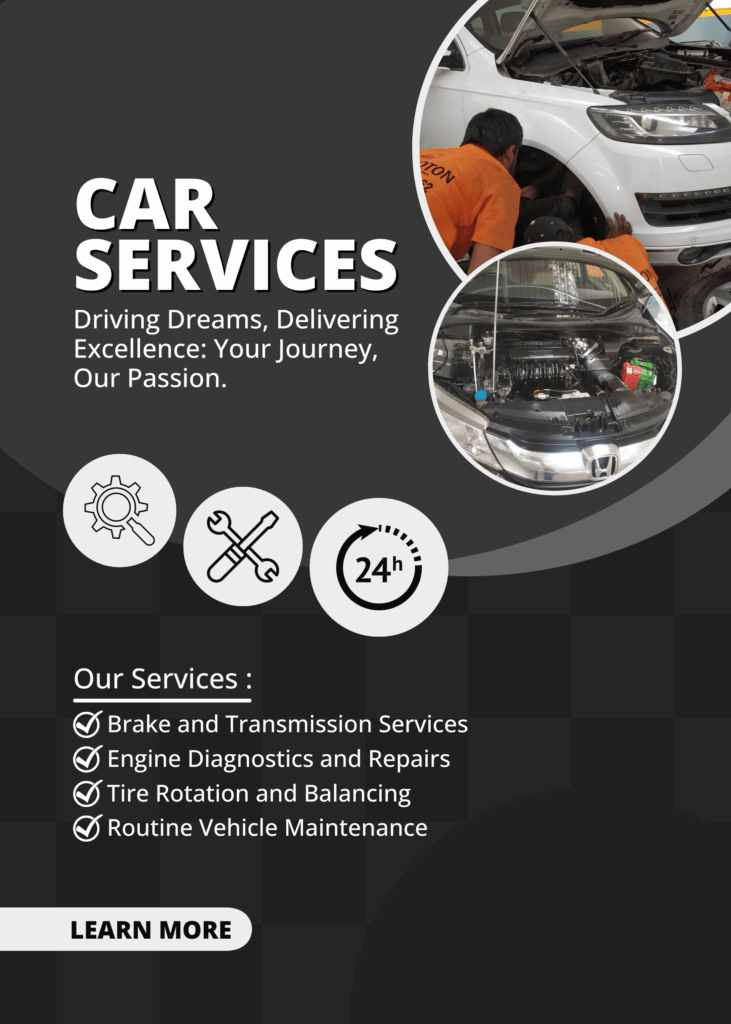The throttle body in your car plays a crucial role in controlling the engine’s air intake. It regulates the amount of air that enters the engine, affecting performance and fuel efficiency. Over time, carbon deposits can accumulate on the throttle body, leading to reduced airflow and potential issues. Cleaning the throttle body periodically helps maintain optimal engine function.
Here’s how to clean the throttle body:
- Materials Needed
- 2 cans of throttle body cleaner
- Clean shop rags
- End wrench set
- Gloves
- Replacement air filter
- Screwdrivers, flat and Phillips head
- Socket set and ratchet
- Prepare:
- Park your car outside in a well-ventilated area.
- Locate the throttle body: It’s usually made of aluminum and positioned between the intake manifold and the air cleaner under the hood.
- Disconnect the ground terminal from the car’s battery for safety.
- Label hoses: Use masking tape or specialized labeling tape to mark hoses and couplings attached to the throttle body for reassembly later.
- Put on protective gear: Wear eye protection and rubber gloves.
You can just contact Car Proton for your throttle body cleaning needs. We are expert in regular maintenance of car.
- Cleaning Process:
- Detach the air duct: Loosen the hose clamp holding the air duct in place (use a Torx or Phillips screwdriver). Twist and pull to remove the air duct without disconnecting electrical wires.
- Spray cleaner: Use an aerosol solvent carburetor/fuel injection cleaner. Spray it onto the throttle body components, paying attention to the throttle butterfly (attached with small screws). You don’t need to remove the throttle butterfly for cleaning.
- Scrub gently: Use a small brush or cotton cloth to remove carbon deposits. Be thorough but gentle.
- Reassemble: Reattach the air duct, ensuring a secure fit.
- Reconnect hoses: Refer to the labels you created earlier to reconnect hoses and couplings.
- Reconnect the battery: Attach the negative terminal back to the battery.
Signs of dirty or clogged throttle body
- Rough Idle: If your car idles roughly or inconsistently, it could be due to carbon buildup on the throttle body. A dirty throttle body disrupts the smooth flow of air, affecting engine stability at idle.
- Reduced Acceleration: A clogged throttle body restricts airflow, resulting in sluggish acceleration. You may notice a delay when pressing the gas pedal.
- Stalling: When the throttle body is excessively dirty, your engine might stall unexpectedly, especially during low-speed maneuvers or when coming to a stop.
- Poor Fuel Efficiency: Reduced airflow means the engine doesn’t receive the optimal air-to-fuel ratio. This inefficiency can lead to increased fuel consumption.
- Check Engine Light (CEL): A dirty throttle body can trigger the check engine light. The onboard diagnostics system detects irregularities related to air intake and emissions.
- Hesitation or Surging: If you experience hesitation or surging while driving, it could be due to inconsistent airflow caused by carbon deposits.
- Increased Emissions: A compromised throttle body affects combustion efficiency, leading to higher emissions. If your vehicle fails emissions tests, consider checking the throttle body.
Remember, regular throttle body cleaning can improve engine performance and prevent issues. Consult your car’s manual for specific instructions related to your vehicle model. If you’re unsure, consider seeking professional assistance from Car Proton.
Happy cleaning! ????????


